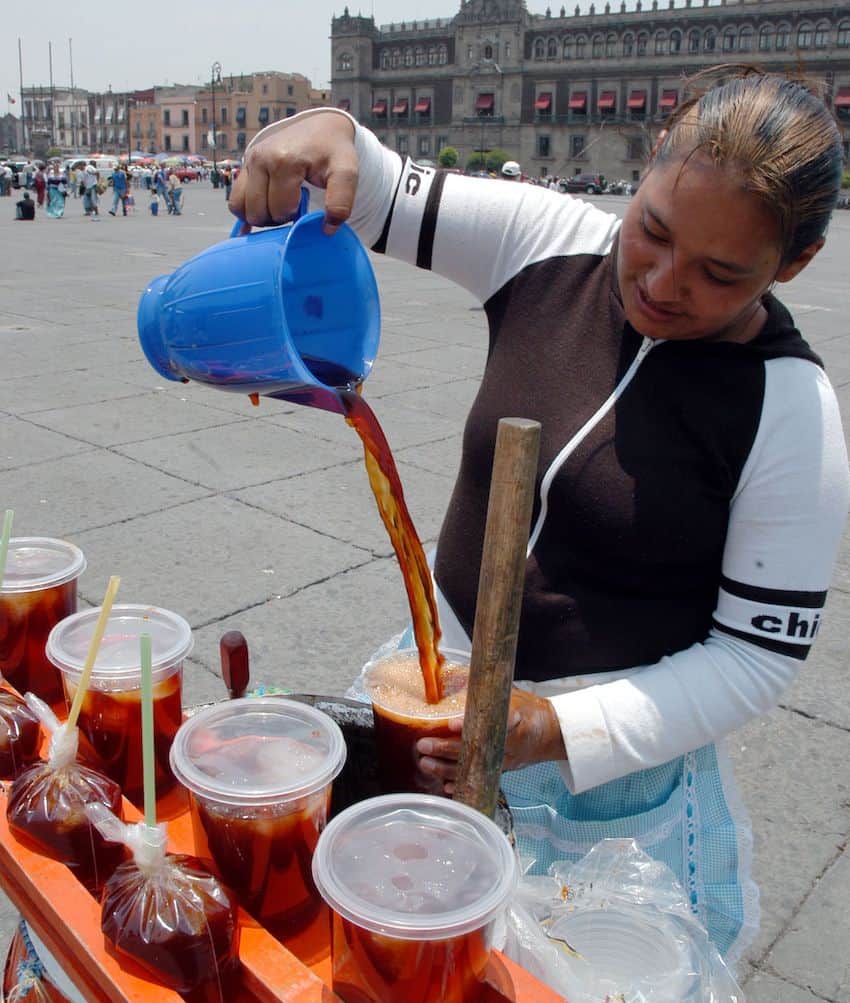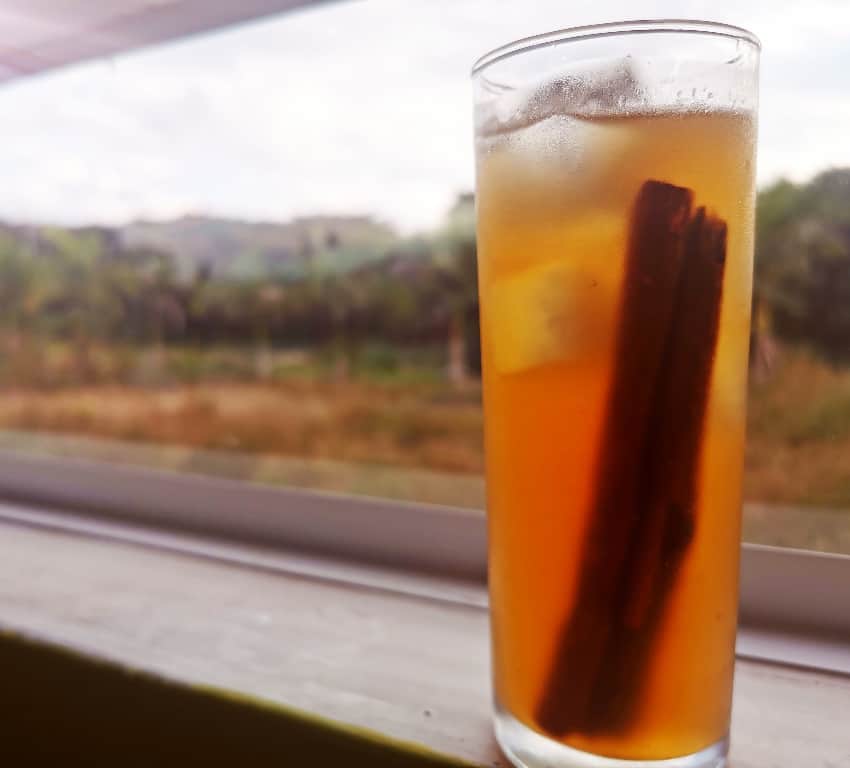Spring in Mexico is often the hottest season, and this year many parts of the country are experiencing an exceptional heat wave. The need for refreshment is upon us and I’m here to share the drink that’s up to the task: tepache!
This effervescent drink has a slight tang and carbonation from the fermentation, acidity from pineapple and earthiness from cinnamon, putting it at the top of my list to reach for on a sweltering afternoon.

Tepache is a naturally fermented drink that dates back to the pre-Hispanic era and was originally made with corn. Its history can be traced to the Indigenous cultures of Mexico. The word tepache is derived from Náhuatl, spoken by the Mexica (also known as Aztecs), and means “drink made from corn”.
Try to picture yourself in a marketplace in the ancient city of Tenochtitlán, the vibrant Mexica metropolis humming with activity and color, with market traders selling aromatic spices and exotic fruits. If you needed an escape from the heat and bustle of the big city, tepache no doubt offered the perfect refreshment.
Prepared by fermenting pineapple, cane sugar, and aromatic spices, this slightly alcoholic drink of the gods captured the imagination of the Mexica, who relished its tangy flavor and apparently believed it held sacred properties.
Modern recipes have dropped the corn and usually call for only pineapple rinds, a sweetener such as piloncillo (unrefined cane sugar), and cinnamon. In recent years, tepache and similar naturally fermented beverages have started to get the attention they deserve, both in Mexico and abroad. Craft breweries and bars have started incorporating tepache into their menus, often offering innovative and creative variations on the traditional recipes.

But there’s an even more compelling reason to give tepache a try. It is a natural probiotic! The human digestive system is home to a vast and diverse community of bacteria, collectively known as the gut microbiome, and probiotics are live bacteria that are considered beneficial to health.
These beneficial microorganisms can offer several potential health benefits, including improved digestive health (especially important for those with IBS or lactose intolerance), a more robust immune system and maybe even mental health benefits!
In keeping with the probiotic nature of tepache, this recipe uses honey! Honey contains oligosaccharides, a type of prebiotic fiber that serves as food for beneficial gut bacteria. Prebiotics promote the growth and activity of probiotics, thus supporting a healthy gut microbiota.
I’ve found that using honey is just as easy and the flavor has more depth than using sugar. Counting the water, this recipe has a grand total of four ingredients and is the perfect starting point for those who’ve been curious to try a probiotic recipe at home but have yet to pull the trigger.
I hope you enjoy making tepache as much as I do!

Tepache
- 1 liter of water
- 250 grams of honey
- 1 cinnamon stick
- Rinds of one pineapple
NOTE: This recipe doubles well, and the doubled version will still work just fine with the rinds of one pineapple!
If cinnamon isn’t to your taste, ginger is also an excellent choice to spice up your new home-brewed favorite.
To make:
In a 2-liter pitcher, mix the honey into the water until dissolved, then add your pineapple rinds and a stick of cinnamon, and stir to incorporate. Within the next 24 hours, you should see the beginning of fermentation, which happens because of the natural yeast found on the pineapple rinds. Depending how balmy your house is, this process usually takes anywhere from one to three days.
After the first day, I advise to start tasting your tepache until it has the flavor you’re looking for, with a younger tepache being sweeter, and older being on the tangy side. Once the tepache has a nice balance of sweet and sour, strain the solids from the liquids and store in the fridge to slow down the fermentation process. This recipe yields a tepache of about 1%-2% of alcohol.
In the mood for something stronger? Mix in your favorite dark rum on the rocks for an excellent “tepache fuerte”.
Stephen Randall has lived in Mexico since 2018 by way of Kentucky, and before that, Germany. He’s an enthusiastic amateur chef who takes inspiration from many different cuisines, with favorites including Mexican and Mediterranean.
